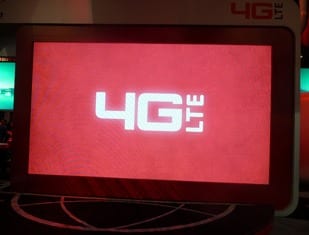Mobile carriers have been marketing 4G for a while, but it’s debatable whether it’s a difference maker yet or strictly a marketing tactic. But while there hasn’t been much use for 4G in the field, consumer demand for faster mobile devices could spur a switch to 4G in the enterprise. Republished with permission from Mobile Enterprise.
 If your business is among those that have been holding their breath in the wait for 4G, is it finally time to exhale? 4G, or fourth-generation cellular wireless standard, is a family of technologies that includes LTE, which is being adopted by both AT&T and Verizon. When being used at high speed—such as in vehicles, buses, and trains—4G will offer peak speeds of 100 Mbps, and mobile professionals can expect about 1 Gbps during pedestrian use. With Verizon Wireless eight months into its long-term evolution (LTE) deployment and AT&T beginning its own rollout this summer, enterprises can start to take a hard look at the technology and the solutions it can bring to fruition.
If your business is among those that have been holding their breath in the wait for 4G, is it finally time to exhale? 4G, or fourth-generation cellular wireless standard, is a family of technologies that includes LTE, which is being adopted by both AT&T and Verizon. When being used at high speed—such as in vehicles, buses, and trains—4G will offer peak speeds of 100 Mbps, and mobile professionals can expect about 1 Gbps during pedestrian use. With Verizon Wireless eight months into its long-term evolution (LTE) deployment and AT&T beginning its own rollout this summer, enterprises can start to take a hard look at the technology and the solutions it can bring to fruition.
Ready—Or Not?
Michael King, research director at IT research and advisory firm Gartner, says that for now, 4G has become more of a marketing term than anything. Clients are starting to consider how 4G can benefit their business operations, he says, but at the moment, laptop users with 4G connectivity are the only ones really seeing increased speeds. Workers with task-specific usage—such as those on rugged devices, in field force automation, and doing mapping and routing—won’t see an impact for some time. King expects carriers to begin spending more money in late 2012 to promote 4G devices, largely to move high-bandwidth users off of 3G networks.
 “The problem with 3G is network congestion, and that’s where LTE is quite useful, to augment capacity,” explains Andrew Green, VP of mobile computing for Sierra Wireless. “As data usage grows—worldwide operators talk about data usage doubling every year or even every 10 months—LTE provides a great user experience for everyone on the network.”
“The problem with 3G is network congestion, and that’s where LTE is quite useful, to augment capacity,” explains Andrew Green, VP of mobile computing for Sierra Wireless. “As data usage grows—worldwide operators talk about data usage doubling every year or even every 10 months—LTE provides a great user experience for everyone on the network.”
While moving nationally toward one wireless 4G standard, LTE, is a step in the right direction, the reality is that there remains considerable diversity in mobile operators’ requirements, says Green. “We’re still struggling with the number of frequency bands that LTE is deployed on,” he says. Verizon, AT&T, and European carriers all have their own variants, and beyond that, there are 14 different LTE frequency bands around the world. In the U.S., Verizon, AT&T, and public safety agencies each have a piece of the 700 MHz band.
Do What You’re Doing—But Faster
Enhanced connectivity, faster throughput, and reduced latency—this is what LTE offers enterprises to simply do better what they’re already doing today, according to Mark Bartolomeo, VP of global enterprise for Verizon Wireless. “Consumerization is driving a lot of the demand for the enterprise to move faster,” he adds, referencing the growing demand by employees to bring powerful consumer-grade smartphones and tablets into the workplace.
To read the rest of this article, go to Mobile Enterprise.


Share this: